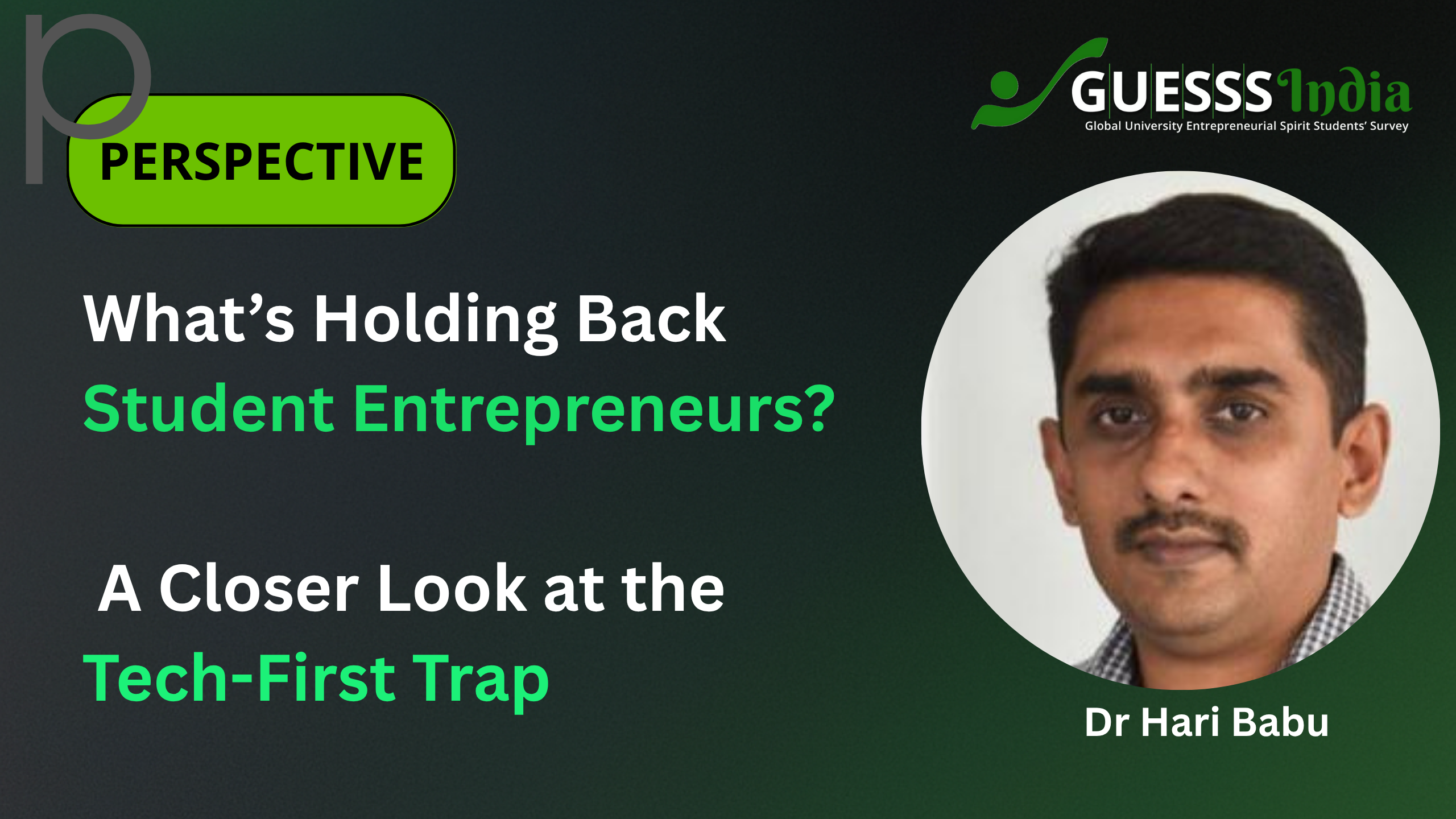India produces over 1.5 million engineering graduates every year—bright, capable, and trained in some of the world’s most advanced technologies. Many of these students are drawn to entrepreneurship, eager to create something of their own. In fact, the GUESSS 2023 survey shows that 32.5% of Indian students are working on startup ideas. Yet, only 4.8% transition into active ventures.
This drop—from idea to execution—raises an important question: what’s preventing student entrepreneurs from moving forward?
While there are several contributing factors, one overlooked issue is the tendency to approach startups with a technology-first mindset. Many students begin their entrepreneurial journey by building something based on technologies they are excited about: AI, blockchain, IoT, or machine learning. However, the problem arises when the product is built before the problem is clearly understood. In this model, technology becomes the starting point rather than the tool used to solve a well-validated problem.
This issue isn’t unique to students. A CB Insights 2018 report identified “no market need” as the number one reason startups fail. These failures don’t stem from poor technical execution—they stem from creating solutions in search of a problem.
In student entrepreneurship, this often looks like technically sound products that struggle with user adoption or market relevance. The energy and skill are there, but the understanding of the user is not. This is where a user-first approach becomes essential.
Entrepreneurship should begin not with technology, but with empathy—understanding the user, identifying real problems, and validating those problems before investing in development. This is the first step in design thinking, and one that is often overlooked in engineering-driven startup environments.
To support this shift, institutions must play a stronger role in emphasizing problem discovery, market validation, and business fundamentals. It is not enough to train students in how to build. We must also teach them what to build, for whom, and why.
This involves integrating entrepreneurship education with real-world problem-solving, encouraging students to engage with users early and often, and building feedback loops before a single line of code is written. Structured mentorship, access to diverse networks, and exposure to customer behavior should be standard components of student startup programs.
Ultimately, technology remains a critical enabler of innovation—but it cannot replace a clear understanding of user needs. To bridge the gap between nascent ventures (32.5%) and active ventures (4.8%), we must help student entrepreneurs shift their approach. They don’t need to abandon technology—they need to place it in the right sequence. Start with the user, then apply the tech.
This mindset doesn’t just improve their chances of startup success—it helps them build ventures that are meaningful, sustainable, and truly needed.



4 Responses
Great insights Dr. Hari Babu! The students must be made aware about the WHY and for WHOM – about the product that they are building. Education about entrepreneurship plays an important role here.
Thanks a lot Dr. Hari Babu fora shedding light on the critical issue in student entrepreneurship – the tech-first trap.
By highlighting the importance of adopting a user-first approach, you rightly emphasized the need for empathy, problem discovery, and market validation in the entrepreneurial journey.
The statistics from the GUESSS 2023 survey are eye-opening, and your focus on design thinking and real-world problem-solving is particularly relevant. The suggestion to integrate entrepreneurship education with practical experiences, mentorship, and diverse networks is a valuable takeaway.
It serves as a reminder that entrepreneurship education should prioritize understanding the user and addressing real-world needs, rather than solely focusing on technical skills. It’s an important read for educators, policymakers, and anyone interested in fostering innovation and entrepreneurship among students.
Teachers rarely developed METHODS of learning where ENTERPRISING is embedded as part of curricular learning. Unless and until teachers ENTERPRISE the UG and PG learning this problem will continue. In reality, learning is enterprising.. and Enterprising can be made learning. Second point I highlight is that Entrepreneurship only for engineering and professional courses is FALSE. Enterprising is equally important for Pol science, Ergonomics, and sociology or zoology student. How come entrp is only relevant for few subjects and fields !
Truly inspiring sir,this helps us to make our first step in a right way with more clarity and confidence